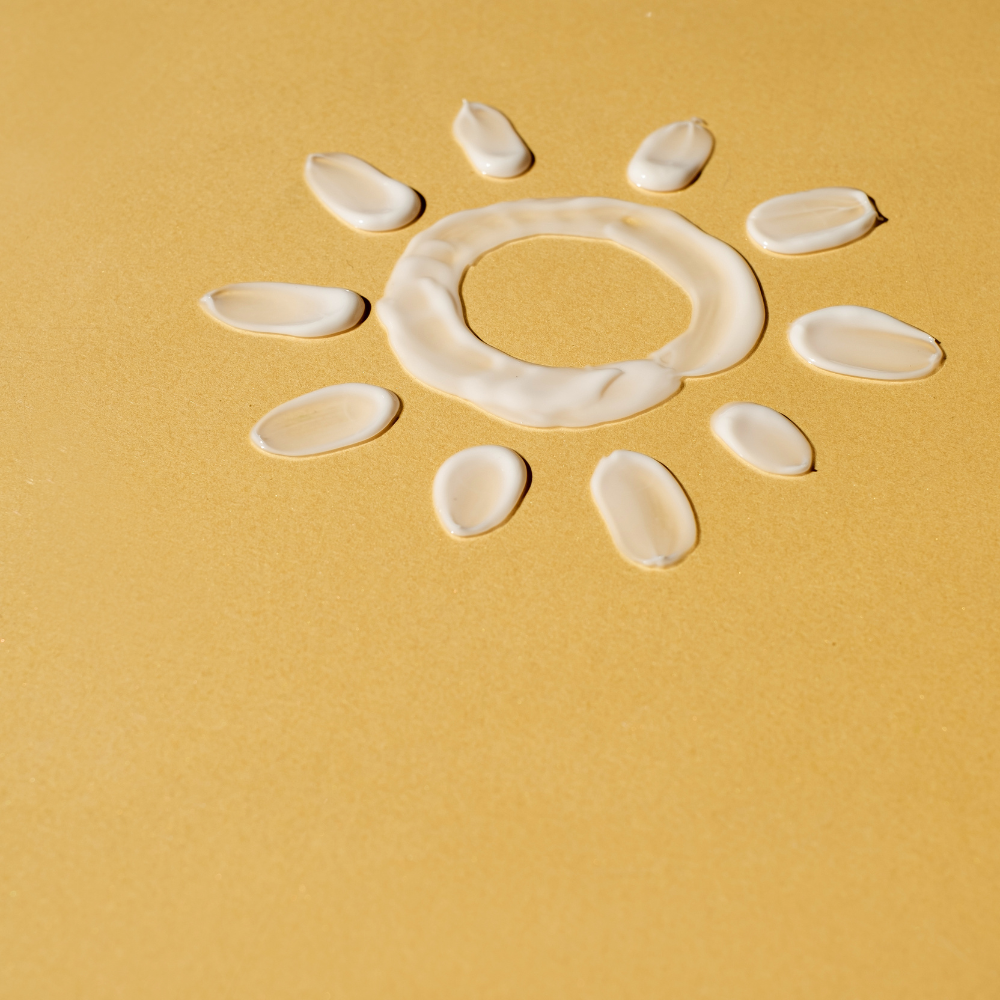Our skin becomes more vulnerable to sun damage as we age, especially on delicate areas like the face and neck. For those over 40, sun protection isn’t just about avoiding sunburn—it’s crucial to maintaining skin health and combating signs of aging. This guide will explore why sun protection is essential for mature skin and provide actionable tips to help you preserve your skin’s vitality while shielding it from harmful UV rays.

The Effects of Sun Damage on Aging Skin
The skin naturally loses elasticity and moisture with age, making it more susceptible to damage. Sun exposure accelerates this process, leading to common concerns such as:
- Wrinkles and Fine Lines: Ultraviolet (UV) rays penetrate the skin, breaking down collagen and elastin. This damage manifests as fine lines and wrinkles, particularly on the face and neck.
- Hyperpigmentation and Dark Spots: Prolonged sun exposure can trigger melanin production, leading to uneven skin tone and dark spots, also known as age spots or sunspots. These are especially prevalent in areas like the face, neck, and hands.
- Dryness and Loss of Firmness: The sun’s heat and UV rays deplete the skin’s natural oils, resulting in dryness, sagging, and a loss of firmness over time.
- Increased Risk of Skin Cancer: While wrinkles and dark spots are concerning from an aesthetic perspective, the sun also significantly raises the risk of skin cancers, particularly in areas that are frequently exposed, such as the face and neck.
Sun damage is cumulative, meaning even small amounts of unprotected exposure add up over time. For those 40 and above, taking proactive steps to shield your skin is essential for both health and aesthetics.
Best Practices for Sun Protection After 40
Protecting mature skin from sun damage requires a comprehensive approach that goes beyond sunscreen alone. Here are key strategies to incorporate into your routine:
Choose Broad-Spectrum Sunscreen
The most effective sunscreen for mature skin is broad-spectrum, meaning it protects against both UVA and UVB rays. UVA rays penetrate deep into the skin, causing aging and damage, while UVB rays are responsible for sunburn. Look for sunscreens with an SPF of 30 or higher to ensure adequate protection.
Apply Sunscreen Generously and Often
As skin ages, it becomes more prone to dryness and thinning, making a thorough sunscreen application even more critical. Be generous with the amount you use, applying a quarter-sized amount to your face and neck. Reapply every two hours if you’re outdoors, and don’t forget areas like the ears and chest.
Wear Protective Clothing and Accessories
For additional protection, incorporate physical barriers like wide-brimmed hats and sunglasses. Clothing with built-in UV protection can be a great option when spending extended time outdoors.
Seek Shade During Peak Hours
The sun’s rays are strongest between 10 a.m. and 4 p.m. If possible, try to avoid direct sunlight during these hours. If you must be outdoors, seek shade or carry a sun umbrella for extra protection.
Hydrate and Moisturize Regularly
Sun exposure can dehydrate the skin, exacerbating dryness and wrinkles. Keep your skin hydrated by drinking plenty of water and using a high-quality moisturizer with hydrating ingredients like hyaluronic acid, which can help plump and protect mature skin.
Recommended Sunscreens and Additional Protective Measures
When selecting a sunscreen for 40+ skin, prioritize products with anti-aging ingredients and hydrating properties. Here are some top-rated sunscreens that are ideal for mature skin:
- Neutrogena Age Shield Face Sunscreen SPF 70 – This broad-spectrum formula provides superior sun protection and includes antioxidants to help fight free radicals.
- EltaMD UV Clear Broad-Spectrum SPF 46 – A dermatologist favorite, this sunscreen is lightweight, non-greasy, and perfect for sensitive or acne-prone mature skin. It also contains niacinamide, which helps improve skin texture and reduce redness.
- La Roche-Posay Anthelios Melt-in Milk Sunscreen SPF 60 – This rich, moisturizing sunscreen is ideal for mature skin, providing both UVA/UVB protection and nourishment for dry skin.
- Supergoop! Unseen Sunscreen SPF 40 – This sunscreen is an excellent choice for a more lightweight, invisible finish. It’s suitable for all skin types and leaves no greasy residue.
In addition to sunscreen, consider incorporating products into your skincare routine that contain antioxidants (like Vitamin C and E) and retinoids. These ingredients can help repair existing damage and prevent further aging by boosting collagen production and reducing the appearance of fine lines and dark spots.
The Importance of Daily Protection and Repair
Protecting mature skin is an ongoing process that requires both prevention and repair. Here’s how to ensure your skin remains youthful and healthy:
Daily Protection
Make sun protection a non-negotiable part of your daily skincare routine. Even on cloudy days or when staying indoors, UV rays can still penetrate windows, causing damage. Apply sunscreen every morning and reapply throughout the day as needed.
Repairing Sun Damage
If your skin has already suffered from sun damage, it’s important to incorporate products that promote skin repair. Look for serums and moisturizers that contain retinoids, peptides, and alpha hydroxy acids (AHAs) to stimulate cell turnover, fade dark spots, and boost collagen production.
Professional Treatments
For more advanced sun damage, professional treatments like chemical peels, laser therapy, or microneedling can help reduce the appearance of wrinkles and hyperpigmentation. Consult a dermatologist to explore these options if you’re looking to address deeper skin concerns.